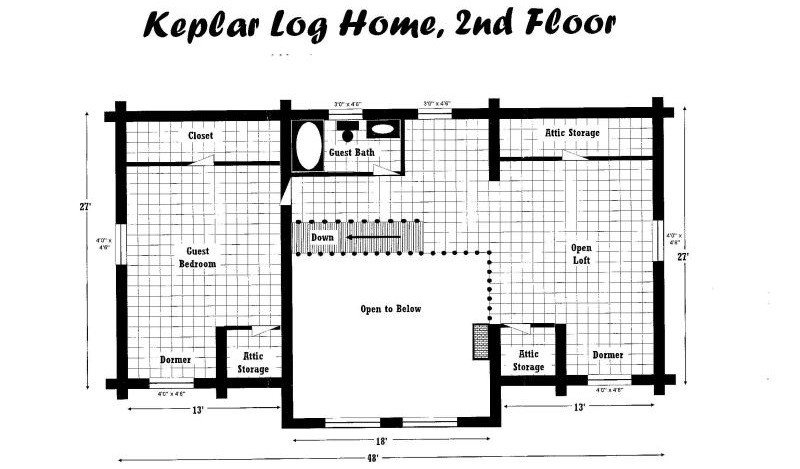
A year in the shade prevents cracking during hewing and construction. The straight, tall nature of poplar makes it ideal for log cabins. Gathering chimney stones was a four-phase process of locating suitable chimneys, buying them, dismantling them and transporting them to our site. Dilapidated log cabins in the area offered salvageable chimneys to a resourceful scavenger. We needed enough stone for the foundation, a large chimney and a porch.
#Authentic log cabin floor plans full
Seasoning the logs also prevents cracking, so they were stacked and left in the forest shade for a full year after harvest. We had the logs cut in the winter when poplar sap retreats from the tree’s trunk to the roots, making the logs less likely to crack. As a safety measure, we ordered each a foot longer than the finished length we would use. The length of the logs ranged from 11 ft.

We needed 167 straight logs with a minimum diameter of 14 in. We contracted them to cut and deliver the stock. We were fortunate to find a local logging crew harvesting 400 acres of poplar on a nearby mountain. Poplar is the log of choice for cabins because it grows tall and straight. Once the plans were finalized, we began gathering material. Local timber and recycled stone add to the authenticity of the cabin
#Authentic log cabin floor plans windows
But because the third pen has been shrunk, the kitchen below has a cathedral ceiling and tall windows for more light. Second floor: A modified version of the first floor, the second story has two bedrooms, a bathroom and a storage area. The dogtrot, traditionally a breezeway, is between the pens and in this case closed in with connecting log walls.įirst floor: Three pens connected by a dogtrot and thoughfully placed doors and windows give the cabin an open feeling with long, unobstructed sightlines. Pens can be adjacent or separate, and are connected by a common roof or dogtrot. Door and window openings are cut afterward. Pens are square or rectangular areas built first with solid log walls on all sides. For extra storage and a second-story bathroom, we added a small pen to the back of the second floor. The kitchen was designed to be the main gathering place with a cathedral ceiling, bathroom and substantial pantry. For the kitchen, we attached a single-story pen to the rear of the cabin. Two necessary spaces, a kitchen and bathroom, now needed to be added to our design. Unlike a pen, a dogtrot cannot be built independently but is a space created by connecting pens. To save space in the rooms, we put the stairwell in an area called a dogtrot that connects the pens. Each would have two floors for a total of four rooms: a living room and three bedrooms. We began with two equal-size, independent pens. These squares and rectangles are called pens, and the trick is to connect them in the most suitable fashion. The interior and exterior walls are all part of the same log construction, and rooms must be square or rectangular, and enclosed during construction. Traditional log cabins, however, are limiting to a designer because of their rectilinear nature.

Sunlight, views and unrestricted airflow were among our design considerations (see the Floor plan for our final design). Our goal was to capture this look with our cabin while creating a comfortable, energy-efficient interior. Did I forget to mention a lot of hard work? Designing a log cabin means connecting the squaresĪppalachian log cabins built in the mid-1700s were simple, boxy and down to earth. Neither my wife nor I had any building experience, but six years, two new roads, 167 logs and five salvaged chimneys later, we moved into an authentic-looking, custom-built Appalachian log cabin. The initial illustration eventually became a CAD drawing, a floor plan and a log schedule.

The project began in 1992 with a design sketched on a yellow Post-It note pad. Encouraged by our family and friends, and inspired by the challenge, we decided to design and build our own. We researched kit homes but found them too modern-looking, too expensive and too limited in design. When we decided to build a home for our family, a log cabin was the obvious choice. The truth is they’ve become part of the landscape. For more than 200 years, they have represented Appalachian history and lore. Growing up in the Appalachian Mountains of Kentucky, my wife and I have always been fond of old log cabins. A mix of modern technology and 200-year-old construction techniques, along with hidden utilities and salvaged materials, creates the cabin’s authentic look.


 0 kommentar(er)
0 kommentar(er)
